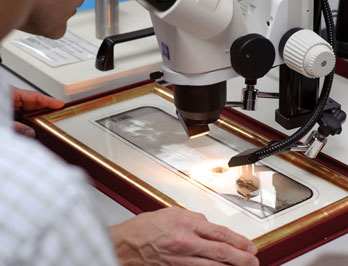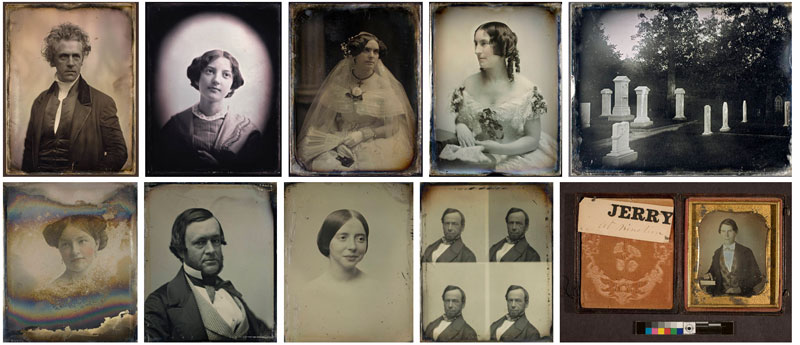
Invented in 1839 by Louis-Jacques-Mandé Daguerre, the daguerreotype is the earliest form of photography. These incredibly detailed images are a form of 19th-century nanotechnology. Some of these priceless works are decaying—developing spots, becoming cloudy, disappearing altogether—and no one knows why.
A team from the George Eastman Museum and the University of Rochester’s Integrated Nanosystems Center (known as URnano) are exploring the intricacies of daguerreotypes—why they decay, what’s growing on them, and how to save them.
Furthermore, their work is building an understanding of nanoparticles that could be useful in nano-engineering, medicine, and technology.
The team includes Professor of Physics Nicholas Bigelow (UR), Brian McIntyre (UR), Ralph Wiegandt (Eastman Museum), and their students.
Funding for this work is provided in part by the National Science Foundation and Andrew W. Mellon Foundation program on Chemistry and Materials Research at the Interface between Science and Art (SCIART), the George Eastman Museum, the University of Rochester Nanosystems Center, and NSF-REU.
The Eastman Museum holds one of the world’s largest collections of daguerreotypes, with about 5,000 images.
 George Eastman Museum on Flickr
George Eastman Museum on Flickr
Through microscopy, the URnano-Eastman Museum research team has found that the silver daguerreotype plate is a biologically active surface, a remarkable finding because silver is naturally antimicrobial.
The team also found that small colonies of fungi are growing and damaging the surface on nearly every daguerreotype they examined. In addition to preserving the images, the team is exploring the physical and chemical processes underlying daguerreotypes.